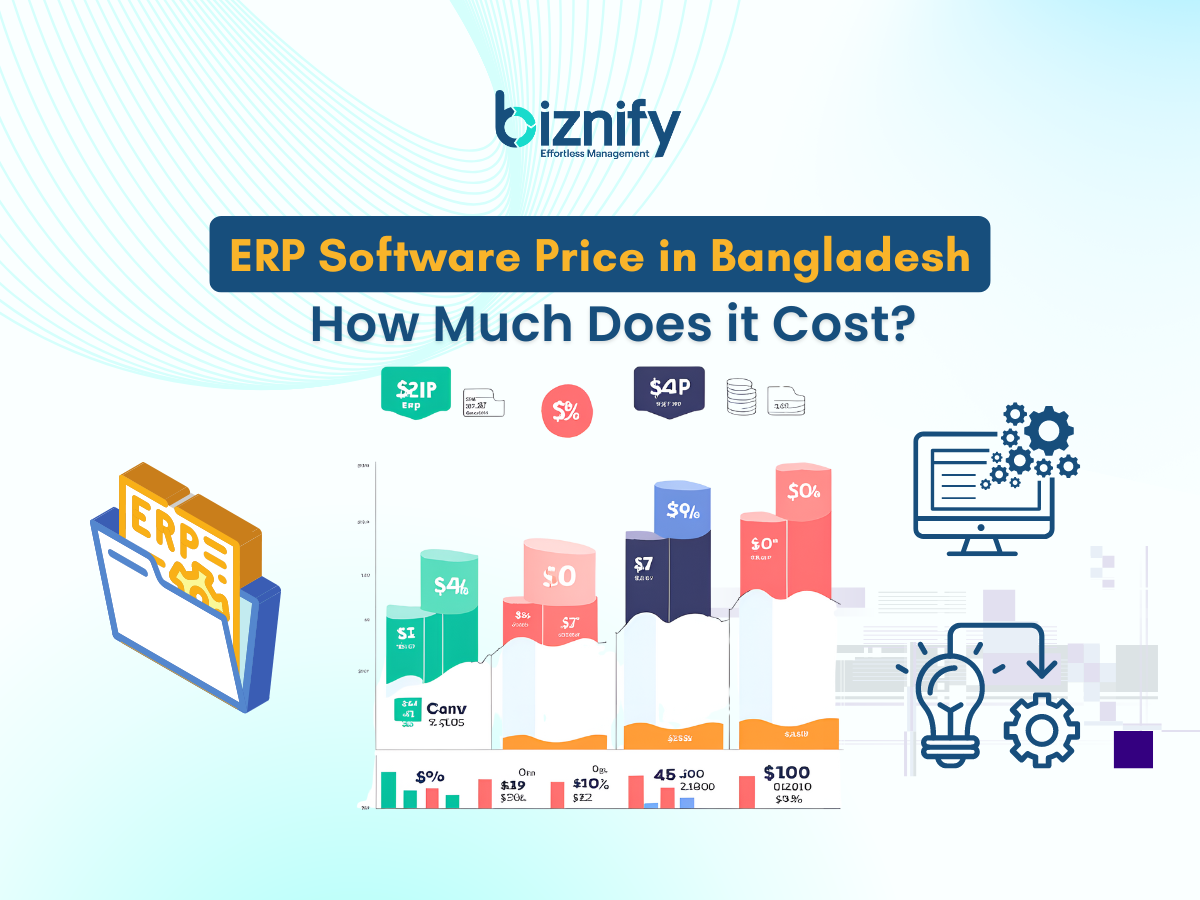
Imagine running your business with the precision of a well-oiled machine—where every department, from finance to inventory, operates in perfect harmony. This isn't just a dream; it's the reality that ERP (Enterprise Resource Planning) software can bring to your company.
Whether you’re a small startup or a large enterprise, the right ERP system can transform the way you do business, making processes smoother, decisions smarter, and growth unstoppable.
But here’s the catch: in Bangladesh’s bustling market, where competition is fierce and margins are tight, choosing the right ERP software can be a game-changer—or a costly mistake. The secret lies not just in selecting the right software but in understanding the ERP software prices in Bangladesh and the factors that influence them.
In this guide, we’ll cut through the jargon and get to the heart of what really matters when it comes to ERP pricing. We’ll explore how different factors—from the type of ERP you choose to the hidden costs that can sneak up on you—affect your investment. Whether you're on a tight budget or ready to invest in a top-tier solution, this article will equip you with the insights you need to make a smart decision.
So, if you’re ready to take your business to the next level, stick with us. We’re about to unravel the complexities of ERP software pricing in Bangladesh and help you find the best fit for your business—without breaking the bank.
When it comes to investing in ERP software in Bangladesh, understanding what drives the costs is crucial. The price of ERP systems can vary widely depending on several factors, and knowing these can help you make an informed decision that aligns with your budget and business needs.
In this section, we’ll explore the key elements that influence ERP software prices in Bangladesh and how each factor can impact your overall investment. Whether you're considering a cloud-based solution or a custom-built system, these insights will give you the clarity you need to choose the right path for your business.
One of the first decisions you’ll need to make is whether to opt for an on-premise ERP system or a cloud-based ERP solution. This choice significantly influences the initial cost and long-term expenses of your ERP software.
On-Premise ERP Cost: With on-premise ERP, you purchase the software and install it on your company's servers. This option often requires a higher upfront investment in hardware and IT infrastructure. However, it gives you full control over the system, which some businesses prefer.
Cloud ERP Pricing: On the other hand, cloud-based ERP operates on a subscription model, where you pay a monthly or annual fee. This model reduces the need for heavy initial investments and offers greater flexibility, especially for small to medium-sized enterprises (SMEs) in Bangladesh. The cost, however, can add up over time, making it essential to calculate the Total Cost of Ownership (TCO) over several years.
The level of customization required for your ERP system is another major cost factor. The more tailored the software is to your specific business processes, the higher the price.
Custom ERP Pricing: Custom-built ERP systems are designed to fit your business like a glove, incorporating unique workflows and specialized modules. While this ensures that the software meets your exact needs, it also comes with a higher price tag due to the development time and complexity involved.
Off-the-Shelf ERP Cost: Off-the-shelf ERP solutions are pre-built systems with standard features that cater to a broad range of industries. These are generally more affordable and quicker to implement but may require some compromises in terms of functionality.
The specific features and modules you choose will directly affect your ERP software price. Different businesses require different levels of functionality, which is why this factor is crucial in determining the final cost.
Core Modules: Essential modules like finance, inventory management, and human resources (HR) form the backbone of any ERP system. The number and complexity of these modules can significantly influence the cost. For example, a basic ERP system with just a few core modules will be more affordable than one packed with advanced features.
ERP Add-Ons Cost: Additional modules or ERP integrations—such as Customer Relationship Management (CRM) or Business Intelligence (BI) tools—can further drive up the price. These add-ons, while useful, should be selected based on their actual value to your business.
The choice of your ERP vendor and the implementation partner can also impact the cost. Whether you go with a local provider or an international one, the differences in pricing models and service quality can be significant.
Local ERP Vendors vs. International Vendors: Local ERP vendors in Bangladesh may offer more competitive pricing and a better understanding of the local market needs. However, international vendors often bring in more robust solutions with a proven track record, which could justify a higher price.
ERP Implementation Cost: The cost of implementation of ERP services, which includes setup, customization, and training, should not be overlooked. A reliable implementation partner is key to ensuring that your ERP system is deployed smoothly and effectively, but this service comes with its own costs, which can vary based on the complexity of your setup.
Finally, the size and complexity of your business play a significant role in determining ERP software prices. Larger enterprises with more complex operations will naturally require more sophisticated and expensive systems.
ERP for Small Businesses: Small businesses often opt for simpler, more affordable ERP solutions that focus on the essentials without the bells and whistles. These systems are typically easier to implement and manage, keeping costs lower.
Enterprise ERP Cost: Large enterprises, on the other hand, may require comprehensive ERP solutions with multiple modules and extensive customization, leading to higher costs. Additionally, industry-specific requirements, such as those in manufacturing or healthcare, can further elevate the price.
Understanding the factors that influence ERP software prices in Bangladesh is the first step toward making a smart investment. From the type of ERP system you choose to the features and vendors you opt for, each decision will have a direct impact on your budget.
By carefully considering these factors, you can select an ERP solution that not only fits your business needs but also offers the best value for your money.
When it comes to investing in ERP software, understanding the typical price ranges can help you set realistic expectations and budget accordingly. The cost of ERP systems in Bangladesh can vary significantly depending on the features, complexity, and vendor you choose.
In this section, we’ll break down the common pricing tiers for ERP solutions—from affordable options for small businesses to premium systems designed for large enterprises.
1. Low-Cost ERP Solutions
For small businesses or startups in Bangladesh that are just starting their ERP journey, there are budget-friendly options available. These low-cost ERP solutions offer essential features without the hefty price tag, making them an attractive choice for companies with limited resources.
Price Range: Typically, low-cost ERP software can range from BDT 100,000 to BDT 500,000 depending on the number of users and the features included. These systems usually cover core modules like finance, inventory, and basic reporting.
Popular Low-Cost ERP Solutions: Some examples of affordable ERP systems available in Bangladesh include Biznify ERP solutions for small businesses, which offers sufficient functionality without unnecessary complexity. Biznify systems often come with the added benefit of local support, making implementation and maintenance easier.
Target Audience: These ERP systems are ideal for small to medium-sized enterprises (SMEs) that need a basic, cost-effective solution to streamline their operations without breaking the bank.
For businesses that have grown beyond the basics and require more advanced features, mid-range ERP solutions offer a balanced mix of functionality and affordability. These systems are designed to scale with your business, providing more comprehensive tools to manage various aspects of your operations.
Price Range: Mid-range ERP systems generally cost between BDT 500,000 and BDT 2,000,000. This price includes more advanced modules such as Customer Relationship Management (CRM), Supply Chain Management (SCM), and Human Resources Management (HRM), alongside core functions.
Examples of Mid-Range ERP Solutions: Popular mid-tier ERP options in Bangladesh include both local and international vendors, offering robust systems that are capable of handling more complex business processes. These systems often include more customization options and better integration with existing software.
Target Audience: This tier is best suited for medium-sized businesses that are looking to improve efficiency and support their growth without moving to a fully enterprise-level solution. Companies at this stage often require more sophisticated analytics, reporting, and automation features.
For large enterprises or businesses with complex needs, high-end ERP solutions provide the most comprehensive and customizable systems. These solutions are designed to handle large volumes of data, integrate seamlessly with other enterprise systems, and support global operations.
Price Range: High-end ERP software in Bangladesh can cost anywhere from BDT 2,000,000 to BDT 10,000,000 or more, depending on the level of customization, number of users, and additional features required. These systems often involve substantial implementation and ongoing maintenance costs.
Examples of High-End ERP Solutions: Leading global ERP vendors, such as SAP and Oracle, offer premium solutions that are widely used by large enterprises in Bangladesh. These platforms provide extensive functionality, including advanced analytics, artificial intelligence (AI) integration, and industry-specific modules.
Target Audience: High-end ERP systems are typically used by large enterprises with complex operations that span multiple locations or industries. These businesses require robust, scalable solutions that can support extensive customization and integration with other business systems.
Understanding the typical ERP software price ranges in Bangladesh is key to making an informed investment. Whether you’re a small business looking for a cost-effective solution or a large enterprise in need of a powerful, customizable system, knowing what to expect in terms of pricing will help you plan your ERP implementation effectively.
By aligning your budget with your business needs, you can choose an ERP solution that not only meets your current requirements but also supports your future growth.
When budgeting for ERP software, it's easy to focus on the upfront costs, such as licensing fees and initial setup expenses.
However, there are several hidden costs and additional considerations that can significantly impact the total cost of ownership (TCO) of your ERP system. These expenses often catch businesses off guard, leading to budget overruns and unexpected financial strain.
In this section, we’ll uncover these hidden costs and offer insights into how you can anticipate and manage them effectively.
Implementing an ERP system is a complex process that involves much more than simply installing software. The cost of implementation and training is one of the most commonly overlooked expenses, but it’s crucial for the success of your ERP project.
Implementation Expenses: The implementation phase includes setting up the system, customizing it to fit your business processes, and integrating it with existing software. Depending on the complexity of your ERP system and the extent of customization required, implementation costs can quickly add up.
Training Costs: Once the system is in place, your employees will need thorough training to use it effectively. The cost of training varies depending on the size of your team and the depth of the training required. Investing in proper training is essential to ensure that your staff can fully utilize the ERP system, but it can also add a significant amount to your total costs.
After the initial implementation, ongoing maintenance and support are necessary to keep your ERP system running smoothly. These recurring costs are often underestimated but are critical to the long-term success of your ERP investment.
Ongoing Support Costs: Regular maintenance, technical support, and troubleshooting services are typically required to address any issues that arise after the system goes live. Vendors may charge an annual support fee, which can range from 15% to 25% of the original software license cost. This fee ensures that you have access to updates, patches, and customer support when needed.
Software Updates and Upgrades: Over time, you may need to update or upgrade your ERP system to take advantage of new features or ensure compatibility with other software. These updates are usually not included in the initial purchase price and can be an additional expense. The cost of upgrades can vary widely, from BDT 50,000 to BDT 500,000 or more, depending on the nature of the updates and the complexity of your system.
While customization allows your ERP system to fit your unique business needs, it can also introduce additional costs that are not immediately apparent during the initial budgeting phase.
Customization Expenses: Customizing your ERP software to align with your specific business processes can be both time-consuming and expensive. Every customization adds to the complexity of the system, which in turn increases the cost. These expenses can range significantly, often adding BDT 100,000 to BDT 1,000,000 or more to your total cost, depending on the extent of customization required.
Scalability Costs: As your business grows, your ERP system will need to scale accordingly. This might involve adding more users, expanding storage capacity, or integrating new modules. Each of these changes can incur additional costs, which should be factored into your long-term budget planning.
Migrating data from your existing systems into the new ERP platform is a critical step that requires careful planning and execution. However, this process can be more expensive than anticipated, particularly if your data is complex or unstructured.
Data Cleansing and Validation: Before data can be transferred to the new system, it must be cleaned and validated to ensure accuracy and consistency. This process can be labor-intensive, especially if your data is stored across multiple systems or in different formats. The cost of data migration can vary, typically ranging from BDT 100,000 to BDT 500,000 depending on the volume and complexity of the data.
Ensuring Seamless Data Transfer: To avoid disruptions to your business operations, it’s essential to ensure that data migration is executed flawlessly. Any errors during this process can lead to costly delays and potential data loss, which might require additional resources to correct.
While the initial cost of ERP software is an important factor to consider, it’s equally important to be aware of the hidden costs and additional considerations that can impact your total investment.
From implementation and training to maintenance and customization, these expenses can add up, potentially affecting your budget and the overall success of your ERP project. By planning for these costs in advance and including them in your budget, you can ensure a smoother ERP implementation and a better return on investment for your business in Bangladesh.
Choosing the right ERP software for your business is a significant decision, one that involves balancing functionality, scalability, and of course, price. With so many options available, it can be overwhelming to determine which ERP system offers the best value for your money.
The key is to focus on your business needs and align them with your budget while considering both the upfront costs and the long-term investment. In this section, we’ll guide you through the steps to help you make an informed choice when selecting an ERP system based on price.
The first and most crucial step in choosing the right ERP software is to clearly define your business needs. Understanding what your company requires from an ERP system will help you avoid unnecessary expenses and focus on solutions that truly add value.
Identify Core Requirements: Start by identifying the essential features and modules your business needs. For example, do you need robust inventory management, advanced financial reporting, or a strong customer relationship management (CRM) module? Knowing your must-have features will prevent you from overspending on unnecessary functionalities.
Business-Specific ERP: Consider if your industry has specific requirements that an ERP system needs to address. For instance, manufacturing companies might need modules focused on supply chain management, while retail businesses might prioritize sales and inventory tracking. Choosing a system that caters to your industry can save costs in the long run by minimizing the need for extensive customization.
Once you’ve identified your business needs, it’s time to align them with your budget. It’s essential to consider both the initial costs and the ongoing expenses associated with the ERP system.
ERP Budget Planning: Determine your overall budget for ERP software, including the costs for licensing, implementation, training, and maintenance. Remember, a lower upfront cost doesn’t always mean it’s the best option; consider the total cost of ownership (TCO) over several years.
Cost Management in ERP: Look for ERP systems that offer flexible pricing models, such as subscription-based plans, which can help manage cash flow better than large upfront payments. Additionally, explore the possibility of negotiating with vendors to get the best possible deal that fits within your budget.
With your needs and budget in mind, the next step is to compare ERP vendors. This is where you’ll need to evaluate the features, pricing, and support services offered by different providers.
ERP Vendor Comparison: Research both local and international ERP vendors in Bangladesh. Local vendors might offer more competitive pricing and a better understanding of the local business environment, while international vendors could provide more comprehensive features and a global support network.
Best ERP Providers in Bangladesh: Create a shortlist of vendors that meet your requirements and request quotes and demos from them. This will give you a clear picture of what each vendor offers and how their pricing aligns with your budget. Among these Biznify ranks top of the table as it fits all the requirement to be your ideal ERP software for SMEs in Bangladesh. So contact Biznify to get the demo.
Before making a final decision, it’s important to get detailed quotes and product demonstrations from your shortlisted ERP vendors. This will help you assess the value each system provides relative to its cost.
ERP Demo Requests: During the demo, pay attention to how user-friendly the system is, how well it integrates with your existing processes, and whether it covers all your core requirements. The demo is also a great opportunity to ask questions and clarify any concerns regarding customization, scalability, and ongoing support.
Quote Comparison for ERP: Compare the quotes not just in terms of price but also in terms of what’s included. Some vendors might offer lower prices but charge extra for essential services like training, support, or upgrades. Be sure to factor these into your total cost comparison.
While the initial price of an ERP system is important, it’s crucial to consider the Total Cost of Ownership (TCO), which includes all expenses over the lifecycle of the software.
TCO Analysis for ERP: TCO includes costs like implementation, training, maintenance, upgrades, and any hidden costs such as customization or additional modules you might need in the future. By evaluating the TCO, you can get a better sense of which ERP system offers the best long-term value.
Long-Term ERP Costs: Consider how scalable the ERP system is. As your business grows, will the system grow with you, or will you need to invest in a new solution? A system with a higher upfront cost but lower ongoing expenses might be more economical in the long run.
Once you’ve done your research and have a clear understanding of what you need and what each vendor offers, it’s time to negotiate.
ERP Pricing Negotiation: Don’t be afraid to negotiate the price. Vendors often have some flexibility, especially if they know they are competing with other providers. You might be able to secure discounts, additional features, or better payment terms.
ERP Contract Review: Before signing any agreements, thoroughly review the contract. Look out for any hidden fees or unfavorable terms, such as lock-in periods or high renewal costs. Ensure that all verbal agreements are documented in the contract to avoid future disputes.
Choosing the right ERP software based on price is about finding the right balance between cost and functionality. By carefully assessing your business needs, setting a realistic budget, comparing vendors, and considering the total cost of ownership, you can make a well-informed decision that will benefit your business in the long term.
Remember, the goal is to invest in an ERP system that not only fits your current needs but also scales with your business as it grows, ensuring a strong return on investment.
Investing in ERP software is a significant decision that can have a profound impact on the efficiency and growth of your business. However, navigating the landscape of ERP software prices in Bangladesh can be challenging, especially with the wide range of options available. From understanding the factors that influence ERP pricing to evaluating the total cost of ownership, every step in the decision-making process is crucial.
As you embark on this journey, remember that the cheapest option isn’t always the best, and the most expensive solution doesn’t guarantee success. The key lies in choosing an ERP system that aligns with your specific business needs, fits within your budget, and offers the scalability to grow with your company. By carefully considering the hidden costs, comparing vendors, and negotiating effectively, you can ensure that your investment delivers the desired return.
Ultimately, the right ERP solution will not only streamline your operations but also provide you with the tools needed to make smarter, data-driven decisions, helping your business thrive in the competitive landscape of Bangladesh. With the insights provided in this guide, you’re now equipped to make an informed choice that sets your business on the path to success.
If you’re ready to take the next step, start by assessing your needs and reaching out to trusted vendors for quotes and demos. The right ERP system is out there—one that will empower your business to achieve greater efficiency, productivity, and growth.
ERP pricing FAQs often highlight several key factors that determine the overall cost of an ERP system. These include the type of ERP (on-premise vs. cloud-based), the number of users, the complexity and number of modules required, customization needs, and the choice of vendor. Additionally, implementation, training, and ongoing maintenance fees can significantly impact the total cost.
Common ERP questions frequently address the cost differences between cloud-based and on-premise ERP systems. Generally, cloud-based ERP solutions have lower upfront costs since they operate on a subscription model, eliminating the need for significant hardware investments. However, it's important to consider the Total Cost of Ownership (TCO) over time, as subscription fees can accumulate, potentially making cloud solutions more expensive in the long run compared to a one-time investment in an on-premise system.
One of the common concerns in ERP pricing FAQs revolves around hidden costs. These can include expenses related to customization, data migration, additional training, ongoing support, and software upgrades. Often, businesses overlook these costs during the initial budgeting phase, which can lead to budget overruns and unexpected financial strain.
When addressing common ERP questions, selecting the right vendor is crucial. Start by evaluating the vendor's experience, reputation, and the specific features they offer that align with your business needs. Requesting demos and detailed quotes can provide insights into their offerings. Additionally, consider the level of support and training they provide, as well as their ability to scale with your business. Vendor contact and thorough inquiry forms can help you gather the necessary information to make an informed decision.
ERP pricing FAQs often emphasize the importance of comprehensive budgeting. To effectively budget for an ERP system, account for not only the initial software license fees but also implementation costs, training, customization, and ongoing maintenance expenses. Conducting a TCO analysis can help you understand all potential costs over the ERP system's lifecycle, ensuring that you allocate sufficient funds to cover both immediate and future needs.
Ready to take the next step in optimizing your business operations with the right ERP software? Whether you have more frequently asked questions or need personalized assistance, we're here to help.
Our team of experts is available to provide you with detailed information on ERP software pricing in Bangladesh, guide you through the selection process, and ensure a seamless implementation tailored to your business needs.
Don’t hesitate to reach out through our inquiry forms or consultation requests to discover how the right ERP system can drive efficiency and growth for your business.
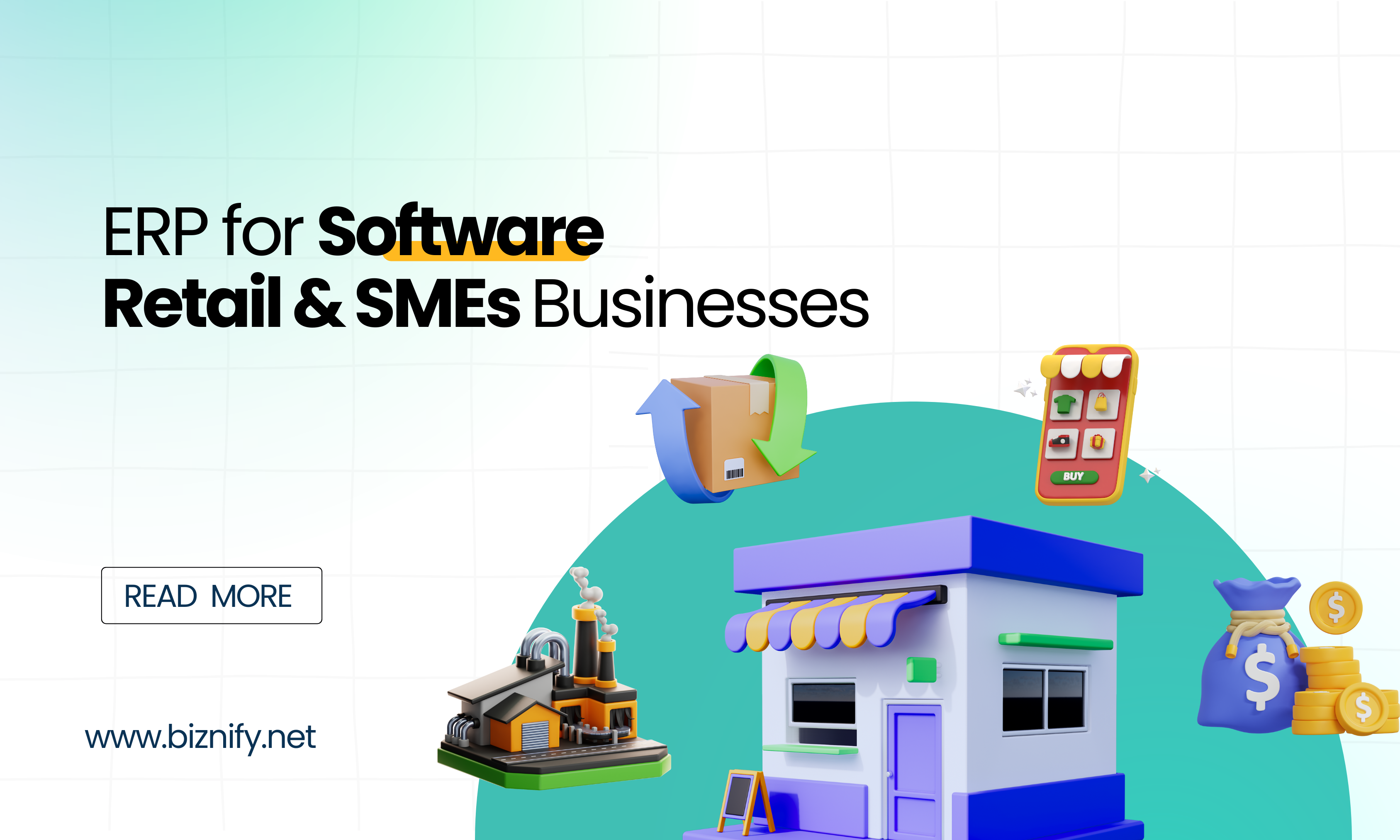
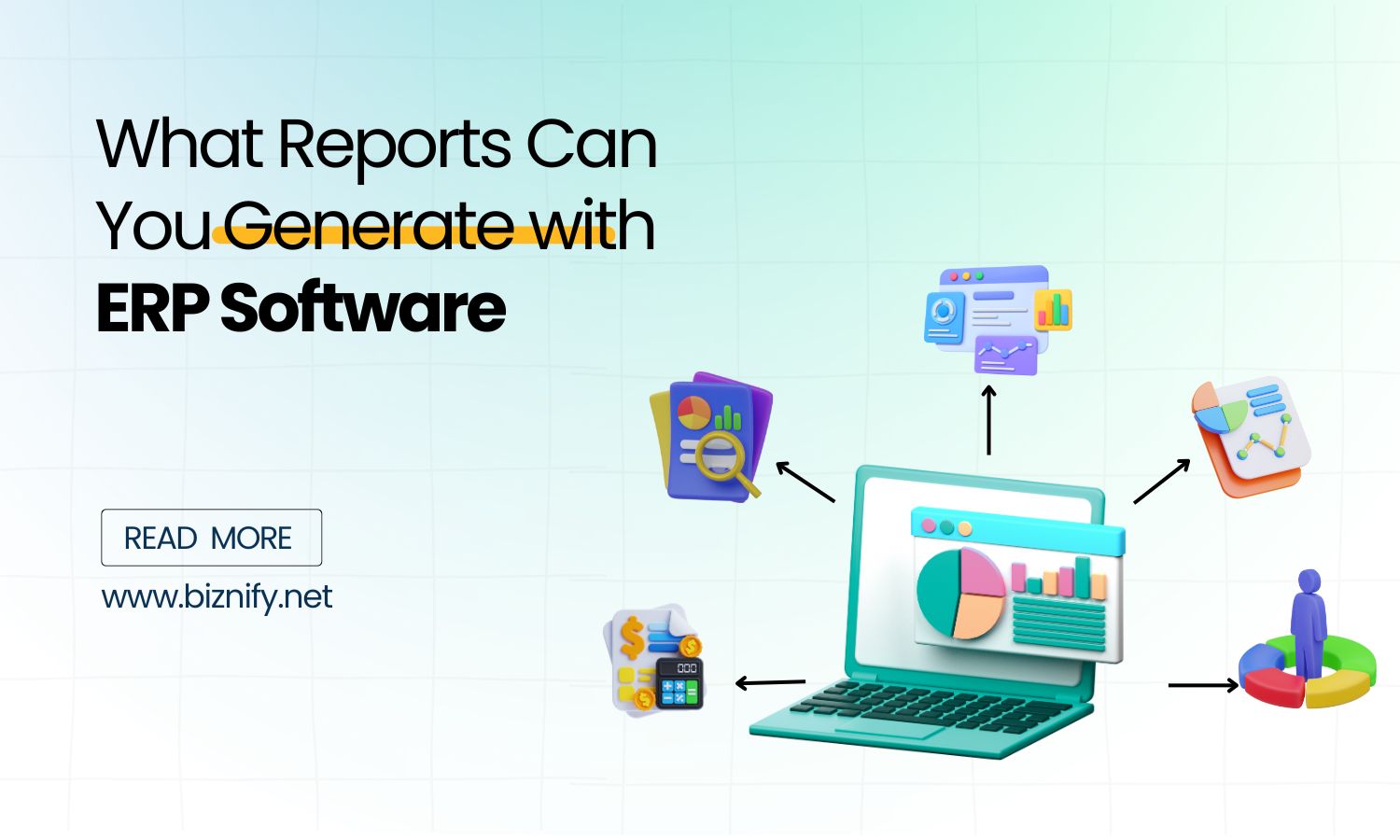
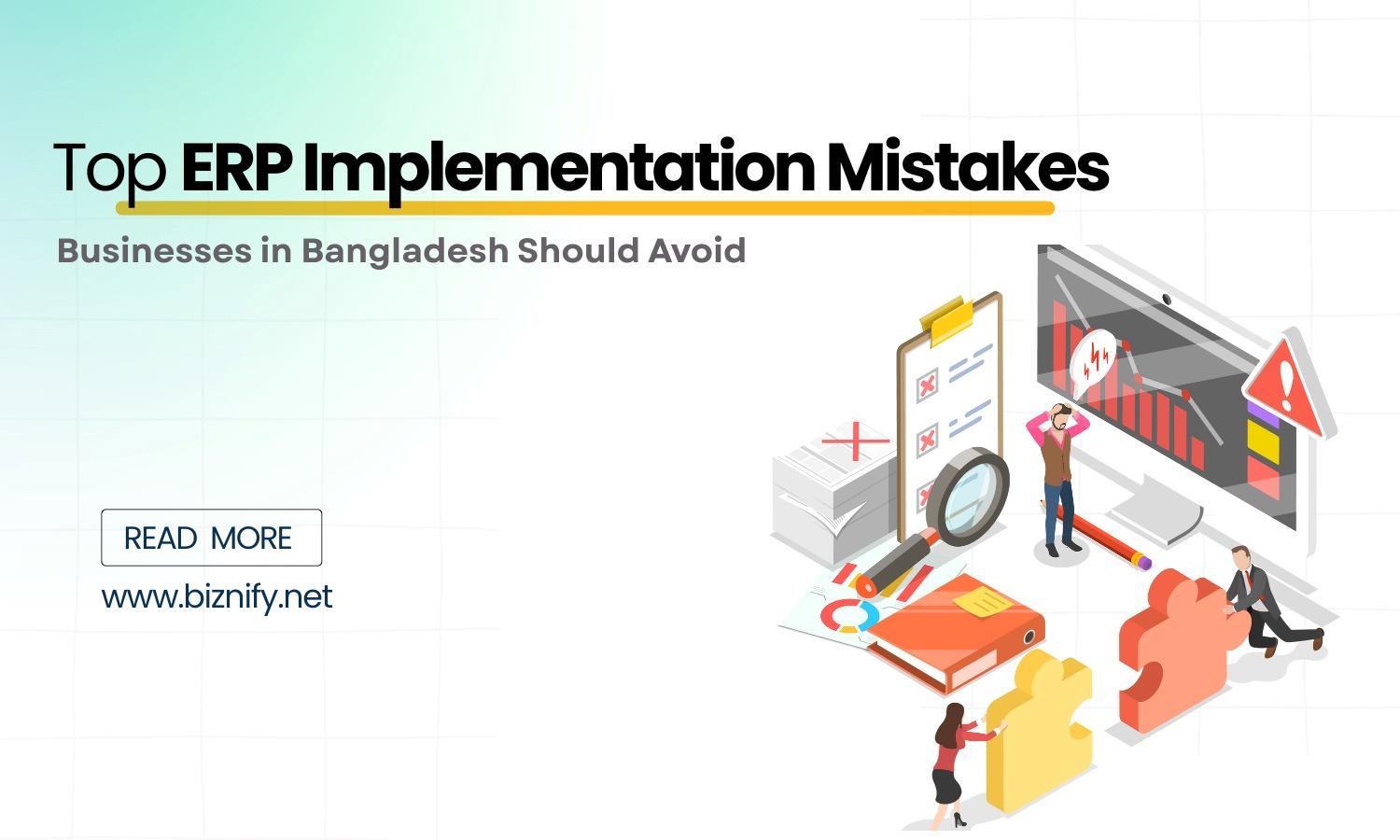
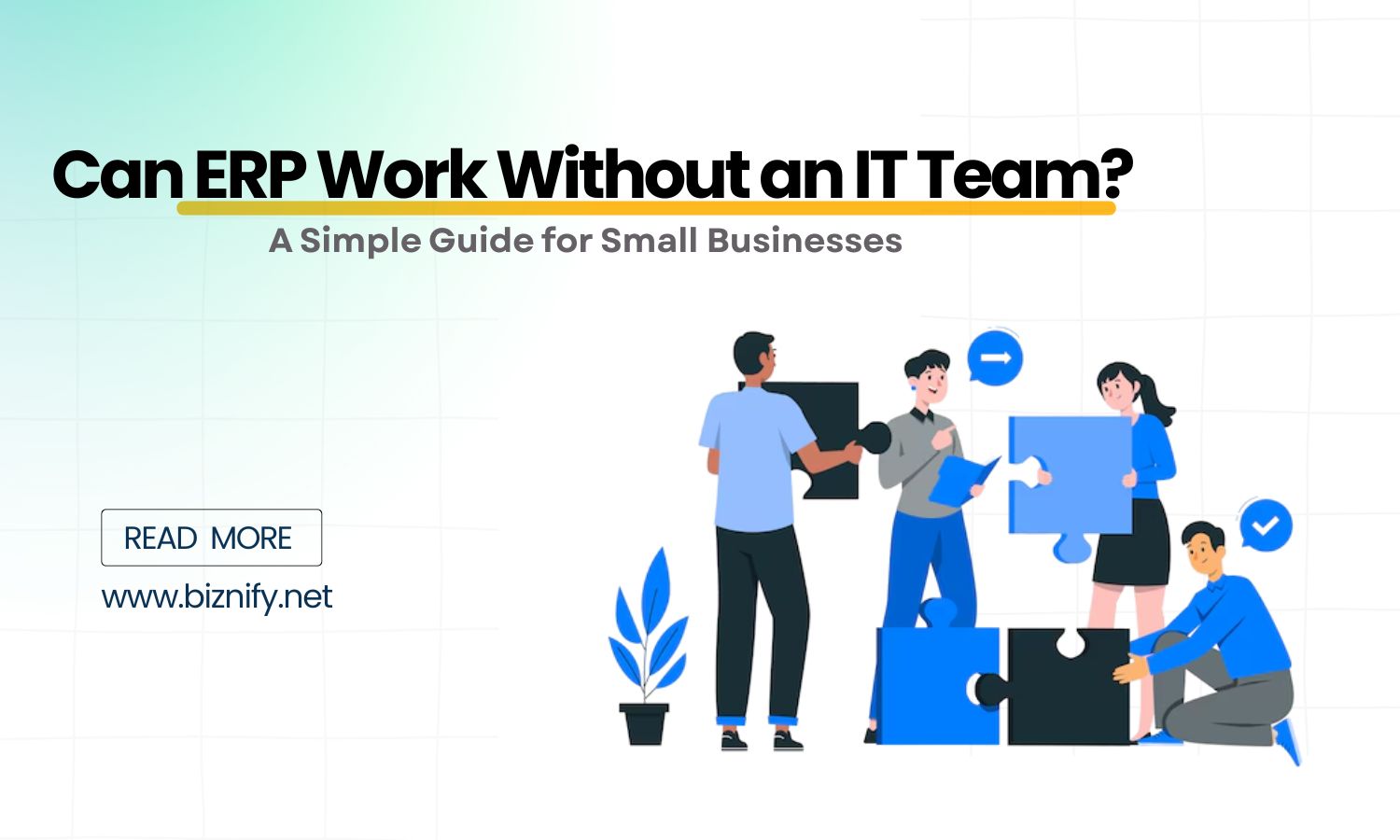
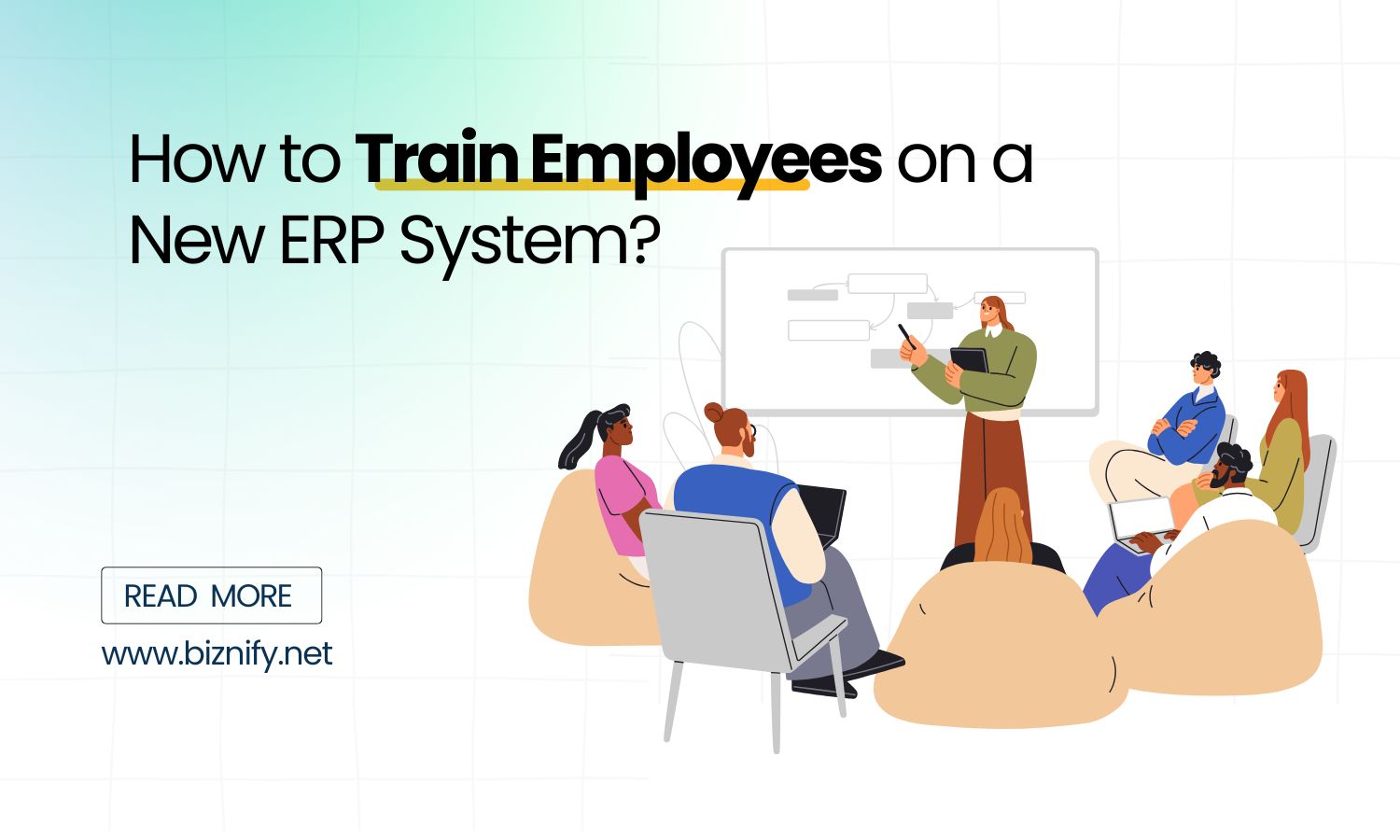
Just exploring ERP or unsure which modules you need? The Biznify team’s here with straight answers.